Complete Solutions to Exercise1.4 of chapter GEOMETRICAL OPTICS of Class 12 book with complete answers and questions
| Class 12 | PHYSICS |
| Chapter | GEOMETRICAL OPTICS |
| CENGAGE PHYSICS | Exercise1.4 |
| Number Of Questions | 12 |
| Academic Year | 2023-24 |
The refractive indices of flint glass for red and violet lights are 1.613 and 1.632, respectively. Find the angular dispersion produced by a thin prism of flint glass having refracting angle `5^@`.
01:51View SolutionRefractive index of glass for red and violet colours are q.50 and 1.60, repectively. Find:
a. The refractive index for yellow colour, approximately
b. Dispersive power of the medium.01:47View SolutionAn equilateral prism is made of glass of refractive index 1.5. Calculate the angles of minimum and maximum deviation. Given:
`A=60^@, mu=1.5, sin48.6^@=(3)/(4), sin41.8^@=(3)/(2), sin27.9^@=(3)/(2)sin18.2`06:01View SolutionA prism is made of glass of refractive index 1.5. If the angle of minimum deviation is equal to the refracting angle of the prism, calculate the angle of the prism.
03:06View SolutionA horizontal ray of light passes through a prism whose apex angle is `4^@` and then strikes a vertical mirror M as shown in Figure. For the ray to become horizontal after reflection, Find the angle by which the mirror must be rotated.
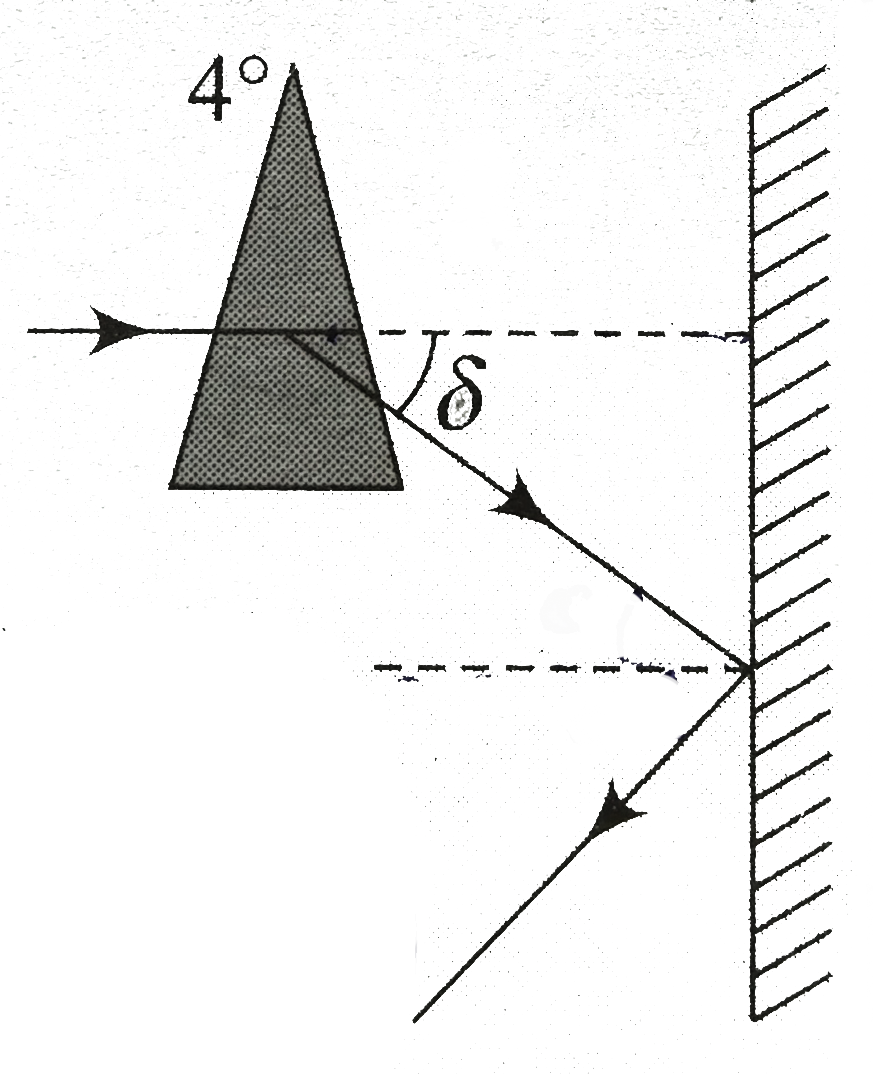 02:35View Solution
02:35View SolutionLight is incident normally on face AB of a prism as shown in Figure. A liquid of refractive index `mu` is placed on face AC of the prism. The prism is made of glass of refractive indes `3//2` . Find the limits of `mu` for which total internal reflection takes place on the face AC.
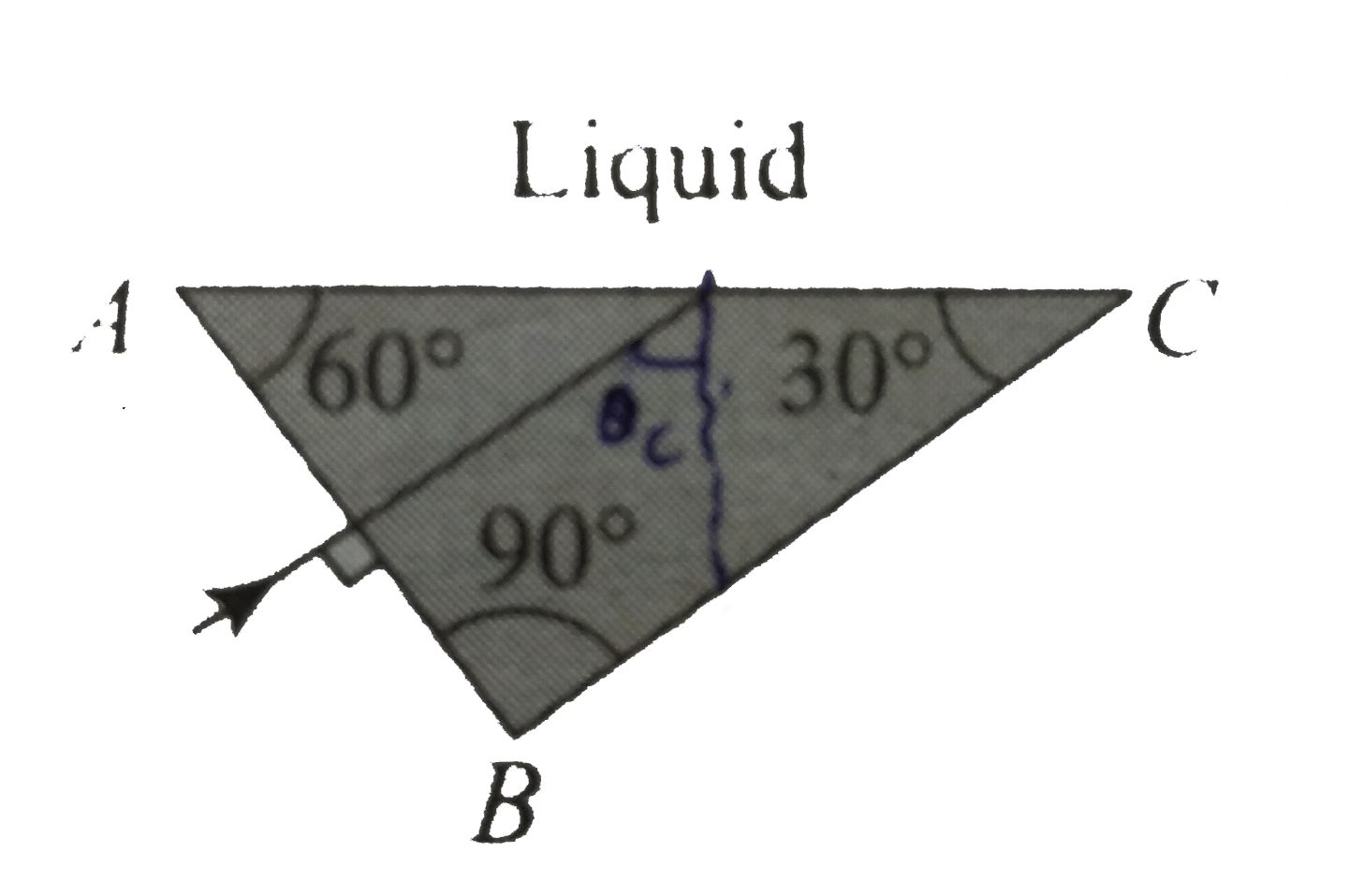 04:26View Solution
04:26View SolutionA ray of light suffers minimum deviation through a prism of refractive index `sqrt(2)`. What is the angle of prism if the angle of incidence is double the angle of refraction within the prism?
02:35View SolutionA ray of light undergoes a deviation of `30^@` when incident on an equilateral prism of refractive index `sqrt(2)`.
What is the angle subtended by the ray inside the prism with the base of the prism?
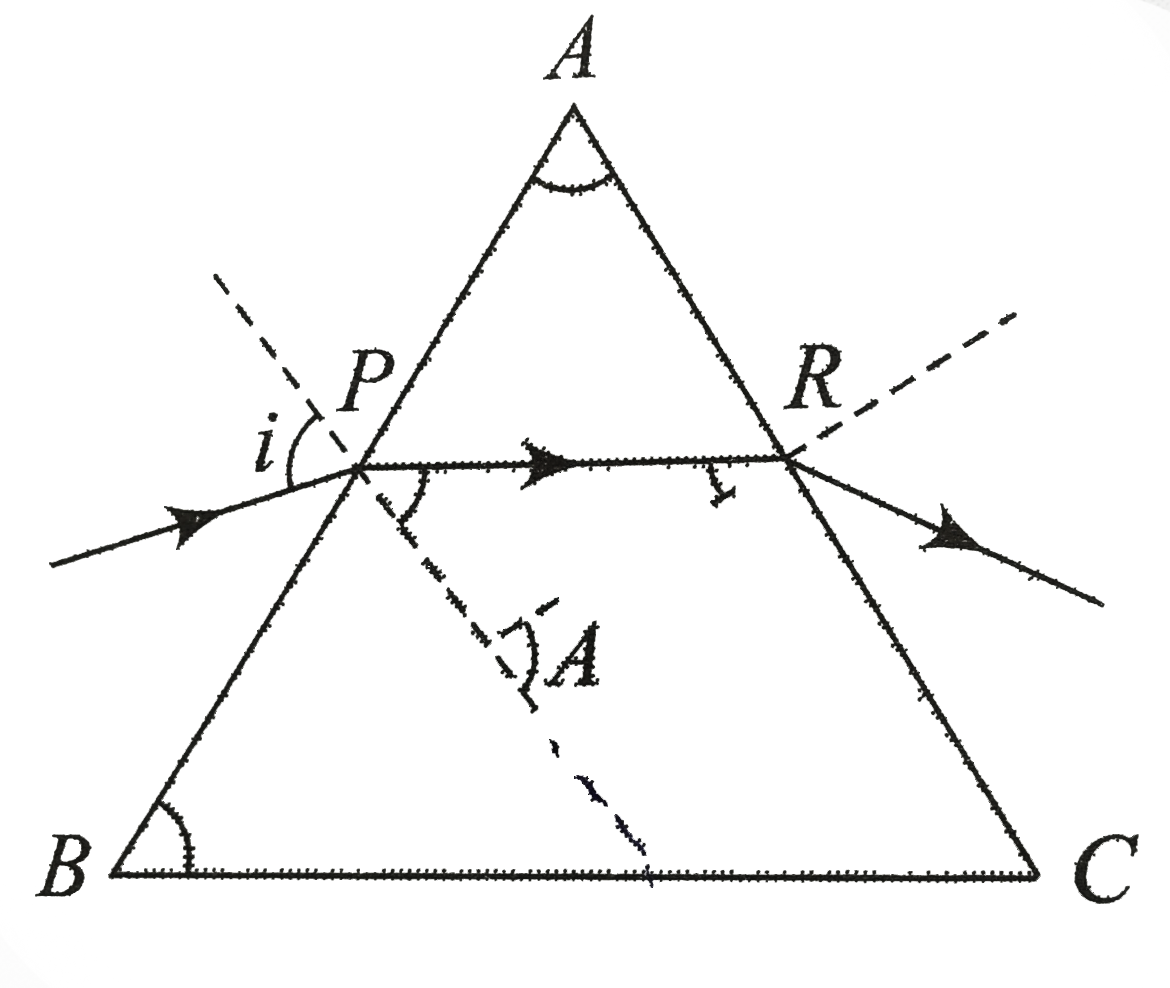 03:20View Solution
03:20View SolutionThe path of a ray of light passing through an equilateral glass prism ABC is shown in figure. The ray of light is incident on face BC at the critical angle for just total internal reflection. The total internal reflection. The total angle of deviation after the refraction at face AC is `108^@`. Calculate the refractive index of the glass.
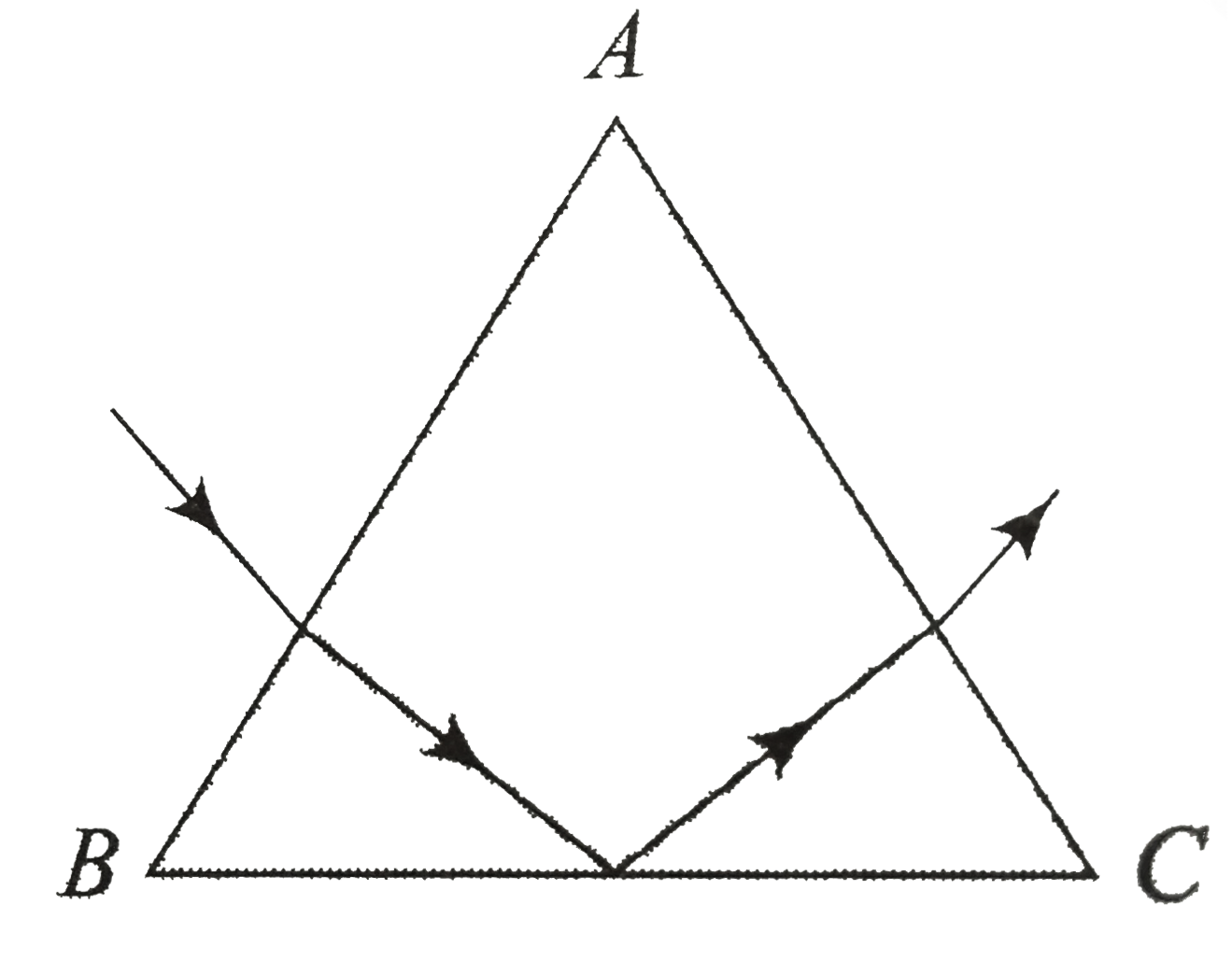 12:09View Solution
12:09View SolutionIn an isosceles prism of angle `45^@`, it is found that when the angle of incidence is same as the prism angle, the emergen ray grazes the emergent surface.
Find the refractive index of the material of the prism. For what angle of incidenc, the angle of deviation will be minimum?
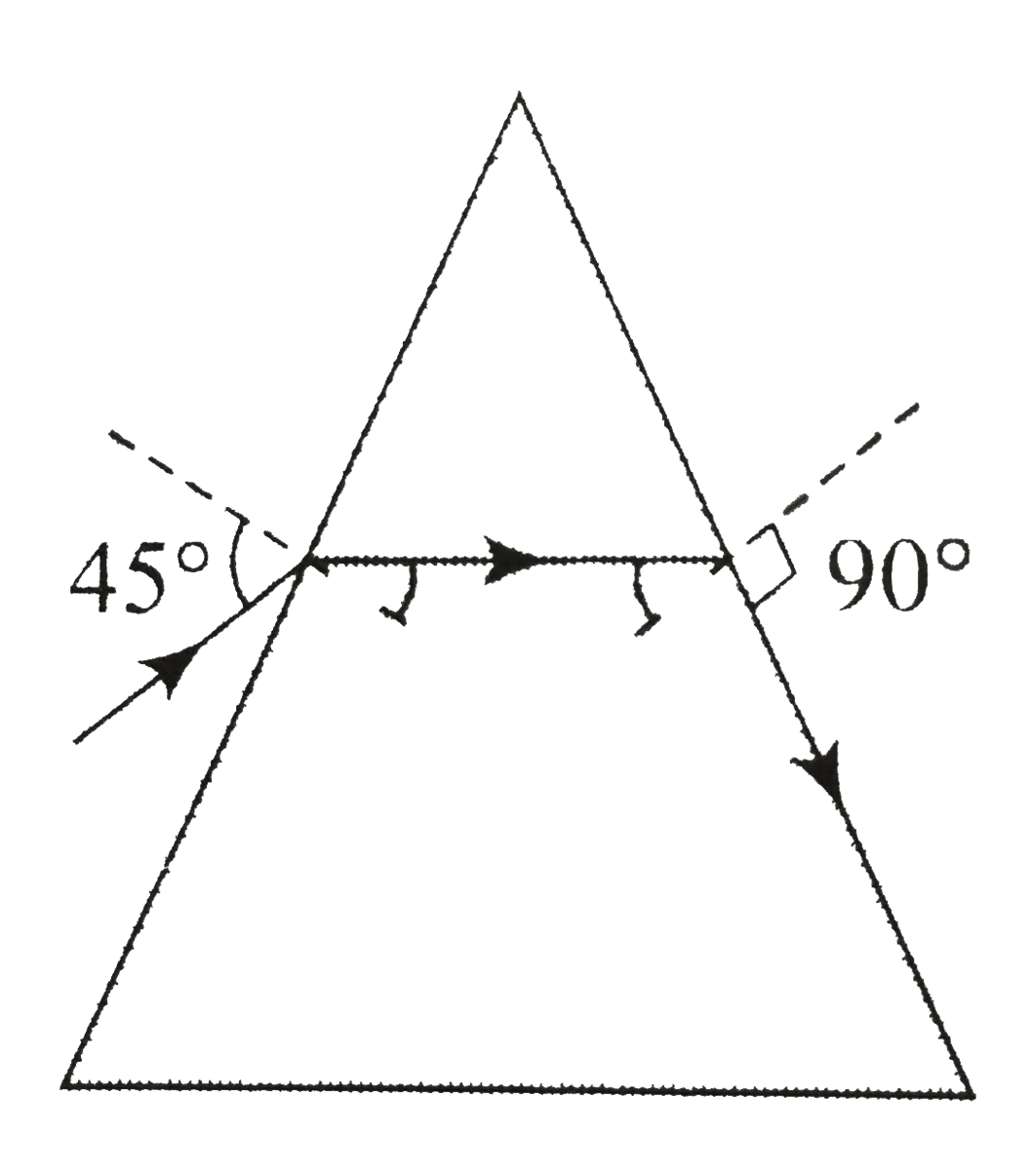 03:17View Solution
03:17View SolutionRefracting angle o f a prism `A=60^@` and its refractive index is `n=3//2`. What is angle of incidence i to get minimum deviation. Also, find the minimum deviation. Assume the surrounding medium to be air `(n=1)`.
02:01View SolutionTwo identical thin isosceles prisms of refracting angle A and refractive index `mu` are placed with their bases touching each other and this system can collectively act as a crude converging lens. A parallel beam of light is incident on this system as shown in Figure. Find the focal length of this so called converging lens.
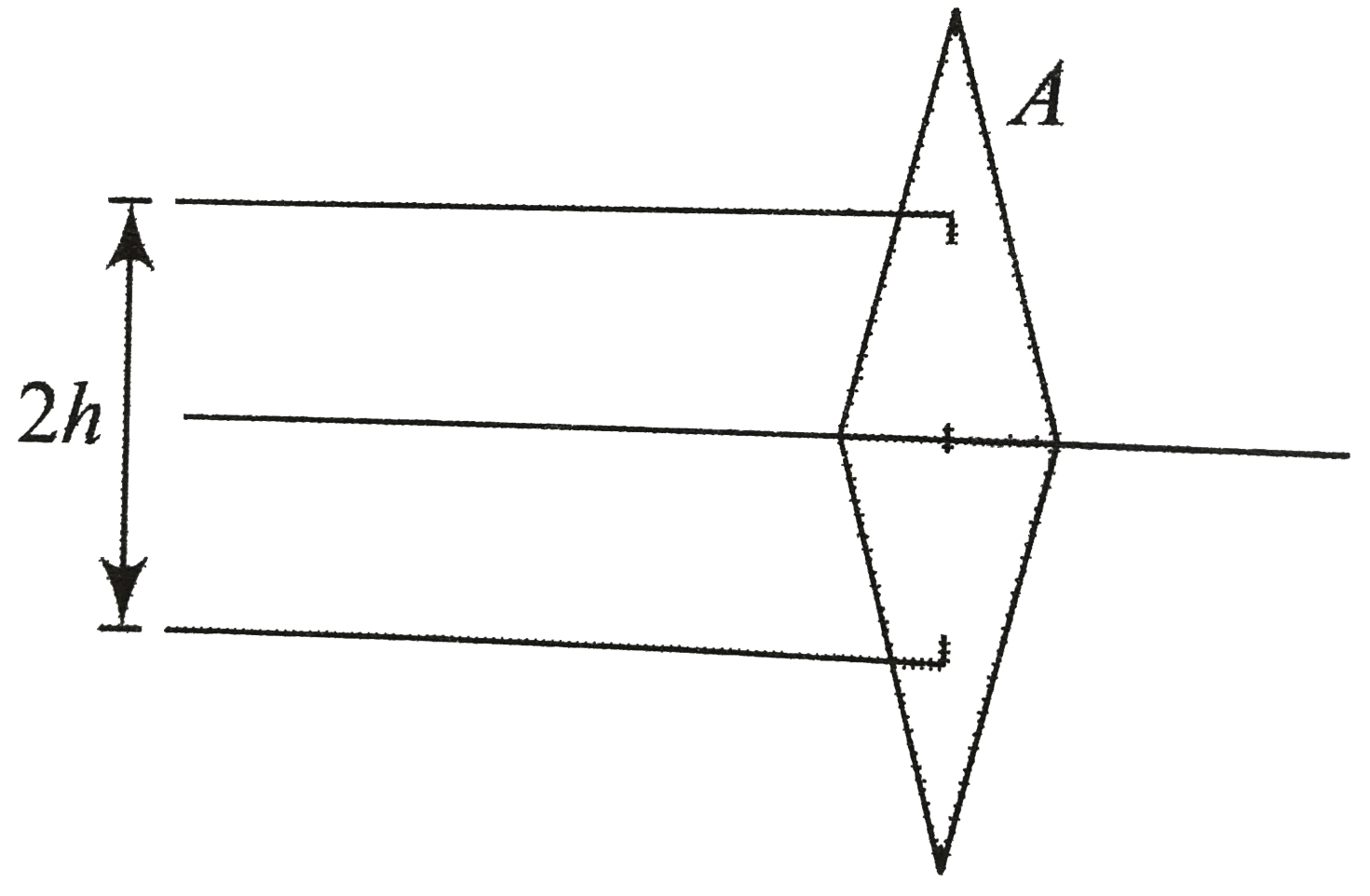 02:02View Solution
02:02View Solution
Exercise1.4 questions and complete solutions for chapter GEOMETRICAL OPTICS of CENGAGE PHYSICS (HINGLISH) of Class 12
